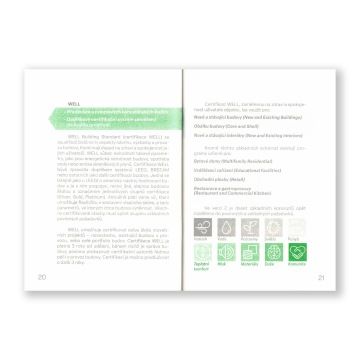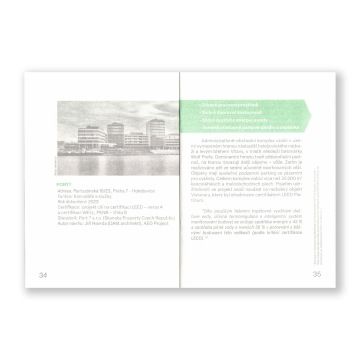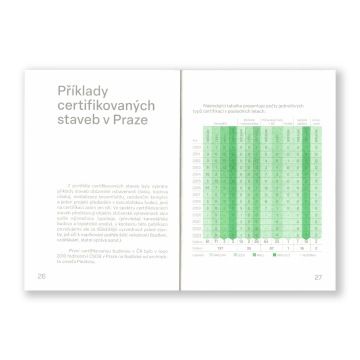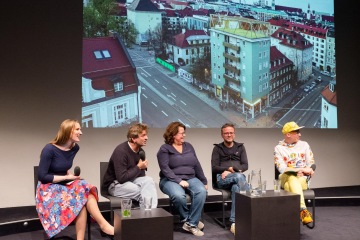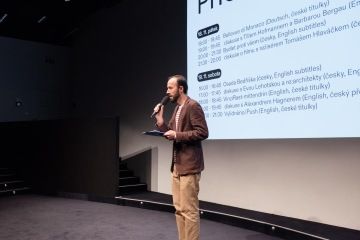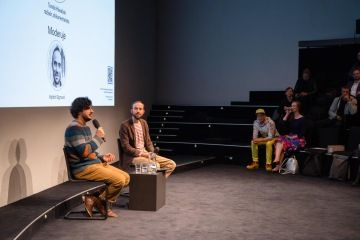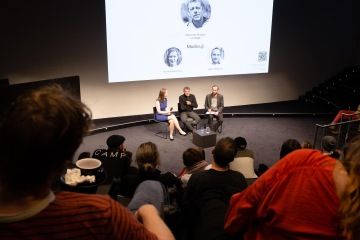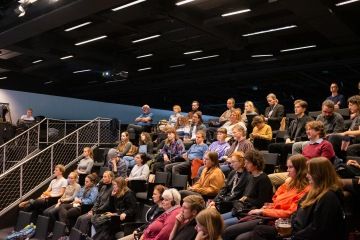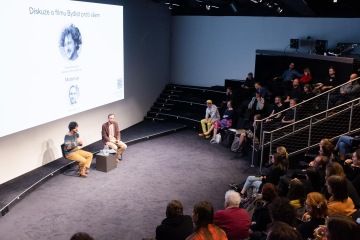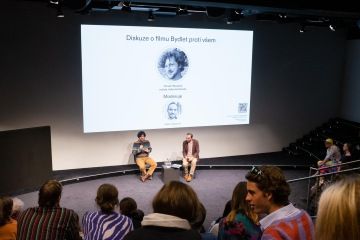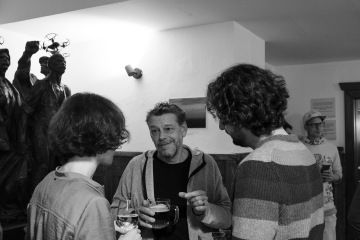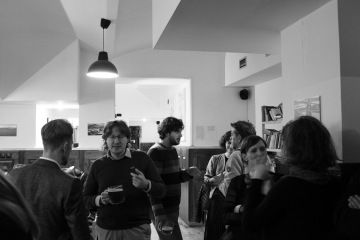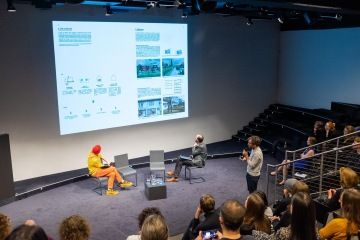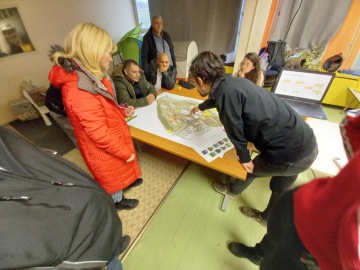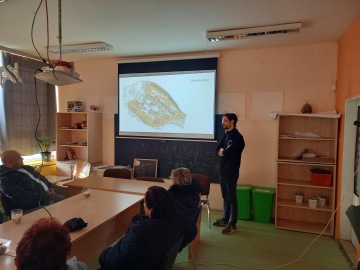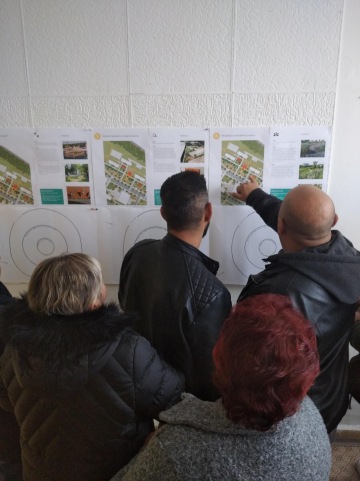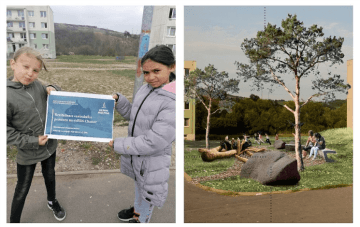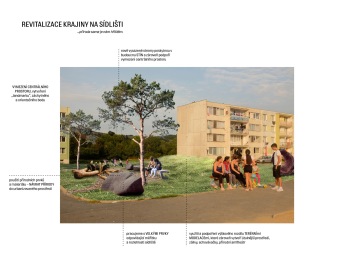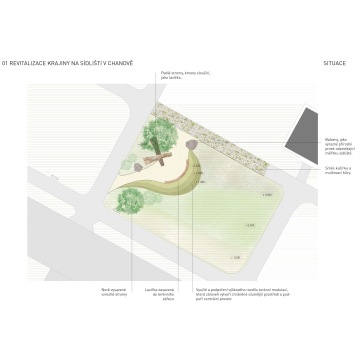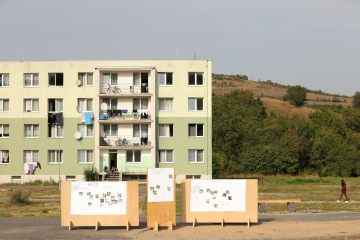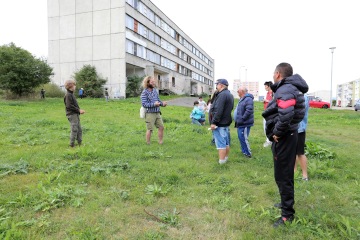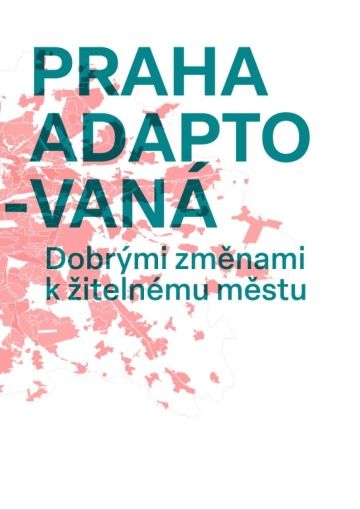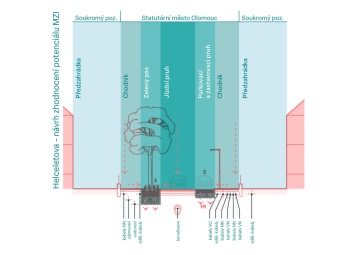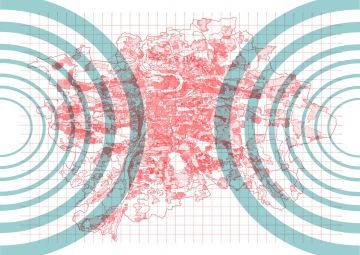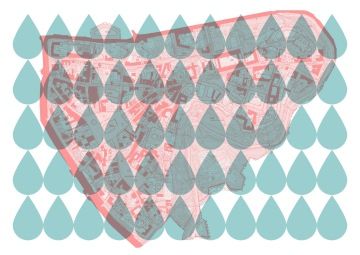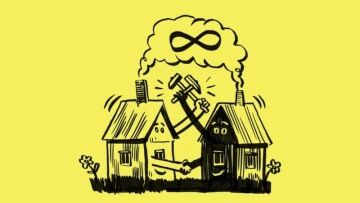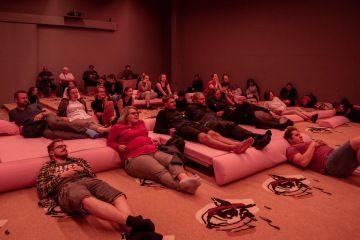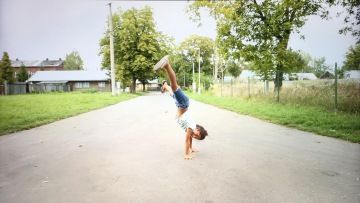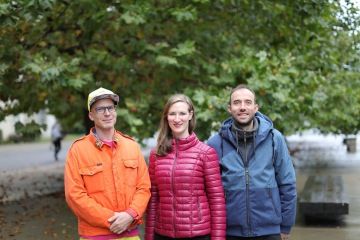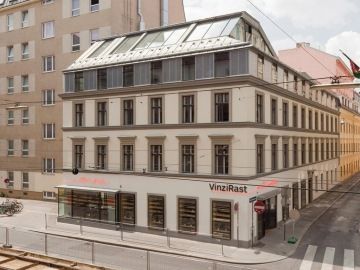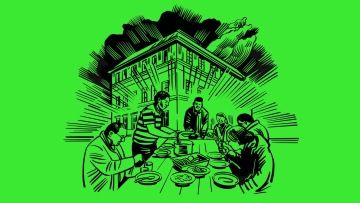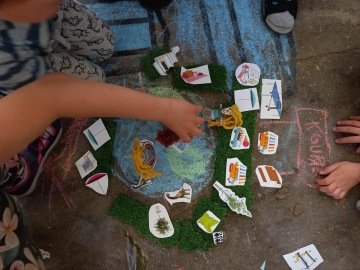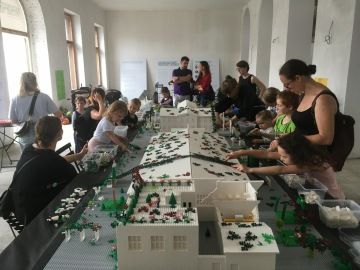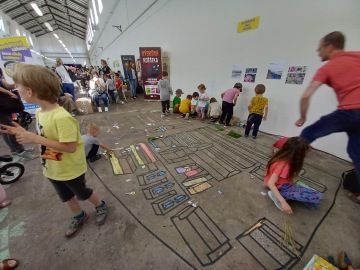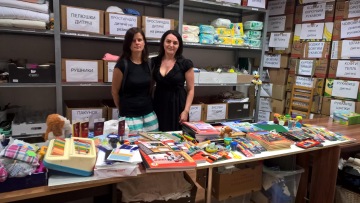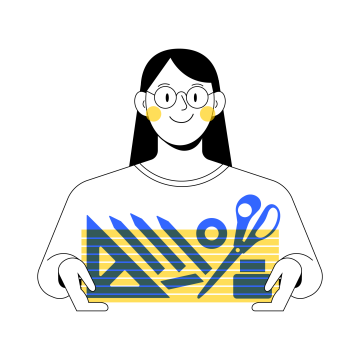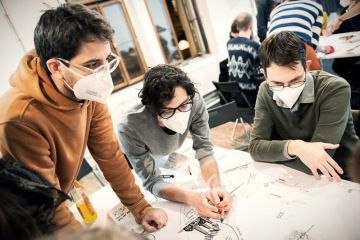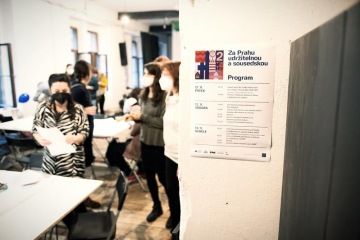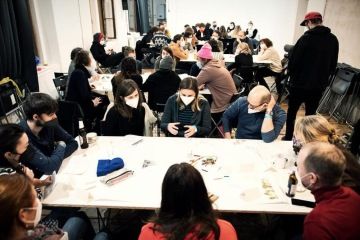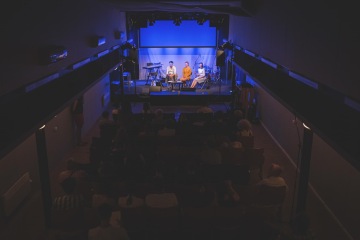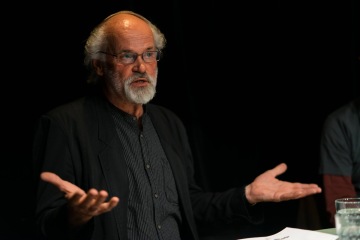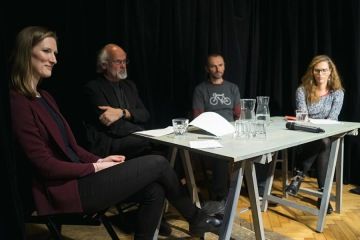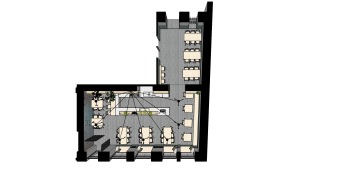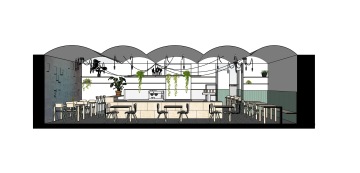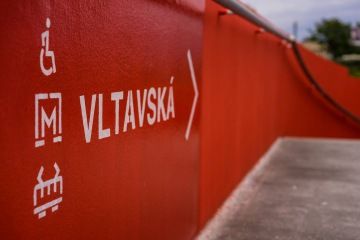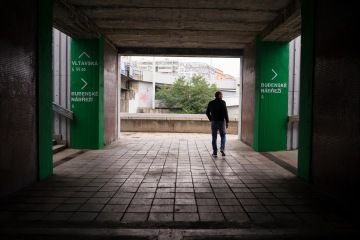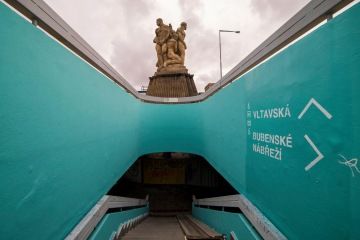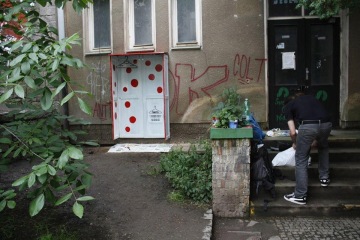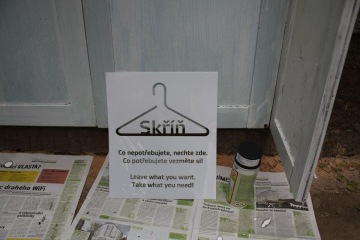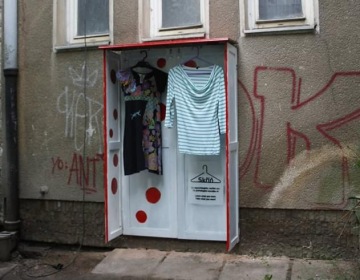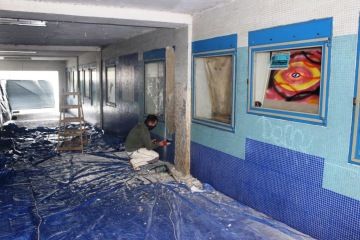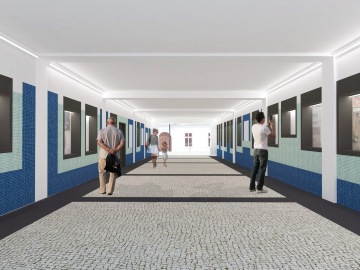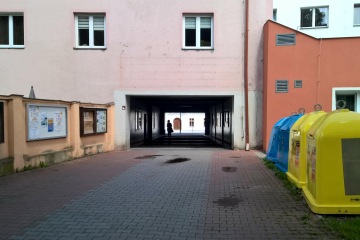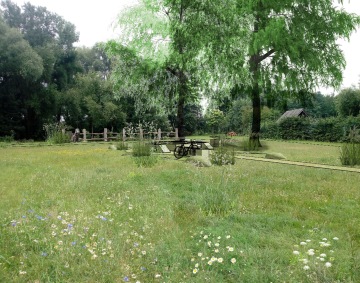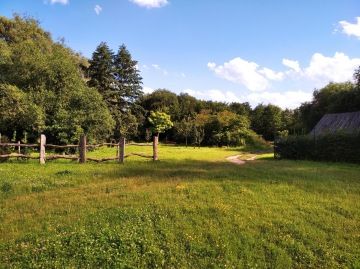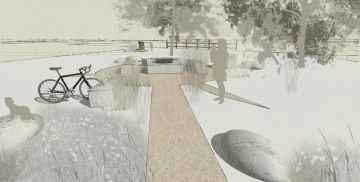Our projects
Praha certifikovaná:
Přínosy a limity certifikace budov
Prague certified:
Benefits and limits of building certification
The study "Prague Certified" summarizes basic information about how building certifications work, contemplates the question of how it is possible for there to be certified buildings that cannot be considered environmentally friendly, and concludes with suggestions for their potential use (not only) in the territory of the capital city of Prague. The publication also includes two interesting interviews about certifications with relevant stakeholders.
Vojtěch Sigmund
Publication for download here
The city of all:
A documentary film festival on housing, architecture and social sustainability
In November 2023, Architects Without Borders organised the Město všech (City of All) film festival in collaboration with Artyčok.TV and the Centre for Architecture and Urban Planning (CAMP).
Contemporary European cities are undergoing a radical transformation in the social composition of their inhabitants. Centres are becoming depopulated, the housing crisis is growing and the influx of new residents is increasing
from abroad due to, among other things, climate change and war conflicts. In most cases, the consequences of this transformation fall first on the socially disadvantaged, who are no longer able to find a place in the centres of today's cities. Diversity of social composition, integration and mutual solidarity are proven means of strengthening civic coexistence. On the contrary, social segregation, exclusion and the creation of inequalities weaken cities. The film festival presents examples of good practice where local communities are trying to create functional social and material conditions for a dignified life.
The festival programme:
- Bellevue di Monaco (from the Architecture of Coexistence series) followed by a discussion with members of the Munich cooperative
(Till Hofmann, Barbara Bergau and Grisi Ganzer).
- Bydlet proti všem, followed by a discussion with the director Tomáš Hlaváček
- Osada Bedřiška, followed by a discussion with the spokesperson of the settlement Eva Lehotská and the architect of the modifications Ondřej Synek (re:architekti)
- VinziRast-mittendrin, followed by a discussion with the main architect Alexander Hagner
- Push
Chanov:
Study of the public space and its consultation with the public
Architects Without Borders designed a study of the public space in the Chanov housing estate and discussed it with the public on 10th of December 2022. This is a follow-up to the successful Participatory Workshop in Chanov, which they organized in 2021 with the support of the Czech Architecture Foundation (NČA).
The study is therefore based on the conclusions of the 2021 Participatory Workshop (mapping of feelings, discussions with locals, analyses, photographs) and was developed in collaboration with Archiplands landscape architects Stanislav Hybler and Jan Waldhauser. A public discussion of the study was held at the Aver Club in Chanov in cooperation with the local Aver Roma association.
Chanov:
Revitalization of the central space in the Chanov housing estate
We took part in a participatory budget project in Most city where we designed the central area of the Chanov housing estate.
The aim of the project was to revitalize the central part of the Chanov housing estate, specifically building a natural park for children, through the installation of benches and tree planting. Therefore, the proposal of “Architekti bez Hranic’ (Architects without Borders) in cooperation with the artist Lukáš Gavlovský, a natural tree sculpture will be created, which can also be used as a seating and entertainment area for children.
Chanov:
Participatory Workshop I.
Architects Without Borders, the platform for contemporary art Artyčok.TV and the collective of the Spolka organised
a participatory workshop in September 2021 with residents
of the Chanov housing estate in Most.
During the workshop, in cooperation with the local organization Aver Roma, a meeting with the residents was held, mapping the individual needs and possibilities of the site. Participation aimed mainly at analysing the state of public space, identifying its shortcomings and potentials. The participatory workshop in Chanova was supported by a grant from the Czech Architecture Foundation and the Mayor of the Statutory City of Most took over the patronage.
Napříč Prahou adaptovanou:
Informační brožura
Across Prague adapted:
Information brochure
In cooperation with Arnika, in addition to discussion evenings
for the general public in 2022, we also published the information brochure Across Prague Adapted.
During the workshop, in cooperation with the local organization Aver Roma,
a meeting with the residents was held, mapping the individual needs and possibilities of the site. Participation aimed mainly at analysing the state of public space, identifying its shortcomings and potentials. The participatory workshop in Chanova was supported by a grant from the Czech Architecture Foundation and the Mayor of the Statutory City of Most took over the patronage.
Petra Nadymáčková, Michael Pondělíček, Eva Tylová, Miloš Vojtěchovský
Publication for download here
Documentary series
Architecture of Coexistence:
Osada Bedřiška / Settlement Bedřiška
The first part of the Architecture of Coexistence series is dedicated to Ostrava Bedřiška settlement, which has long been classified as one of the so-called socially excluded localities. Bedřiška, however, is far from meeting the characteristics of
an excluded locality as many of us imagine them.
People like living here, they consider the settlement as their home and together they try to take care of their own houses as well as the public space. For example, a community centre has been set up here, where residents prepare leisure activities for children and meet to discuss current problems. Over time, their efforts have become a remarkable example of civic and community activism that has helped to negotiate changes to the disposal plans and, in turn, to push for the overall revitalisation of the settlement.
The documentary series Architecture of Coexistence is produced in cooperation with Artyčok.TV.
You can watch it here.
Documentary series
Architecture of Coexistence:
Bellevue di Monaco
The second part of the Architecture of Coexistence series presents the Bellevue di Monaco project, located in several buildings in the centre of Munich. The houses were originally to be demolished in order to build luxury apartments, but the city's intention was reversed by a group of activists through the guerrilla reconstruction of one of the apartments.
The subsequent migration crisis of 2015 prompted the formation of an official cooperative of several hundred local residents, who rented the houses and transformed them into a multifunctional centre. In addition to a cultural centre with a café, the houses house apartments housing both native residents and young refugees. Through voluntary educational activities, the local community helps the refugees to integrate more easily into society and they in turn enrich the town with their life stories, culture or traditional food, which create a specific identity for the place.
The documentary series Architecture of Coexistence is produced in cooperation with Artyčok.TV.
You can watch it here.
Documentary series
Architecture of Coexistence:
VinziRast – mittendri
The third part of the Architecture of Coexistence series presents the Viennese project VinziRast-mittendrin, whose motto is "living together". Students, (formerly) homeless people and now also refugees have found a home there.
The house in the center of the city thus enables the intermingling, meeting and long-term coexistence of people from different social classes with the intention of mutual enrichment, inspiration and help. In addition to serving as a residence, the house offers employment opportunities, educational and cultural activities, thanks to volunteer cooperation. Despite the rather difficult circumstances of its creation and the initially problematic reception in the locality, today the VinziRast-mittendrin project is a respected and popular place for many residents, not only from the surrounding area.
The documentary series Architecture of Coexistence is produced in cooperation with Artyčok.TV.
To watch click here.
Workshops for kids
In the spring and summer of 2022 we managed to realize three workshops with the creative team of the progressively developing Prague Market and architect Kamil Štajgl.
Our premiere programme for children took place as part of the Children's Day, where we let the young architects and architects use their imagination to furnish the Prague Market Hall space on a giant 2D plan. The result was a space equipped with trees, benches, dinosaurs and other necessities that children's imaginations say should not be missing in public space.
The second workshop developed the idea that children should also have a say in the shape of public spaces. In this case with the help of a playful lego building set. It was an accompanying programme to the exhibition "Interspaces of the Prague Market Hall". The children were given the opportunity to try out on a lego model of the Prague Market Hall corridor how the space between the halls could be arranged so that they could enjoy the Prague Market even more.
We were happy to realize both workshops with the help of our architect colleague Anna Aksyonova from Ukraine to make the program accessible for Ukrainian children as well.
The next, i.e. the third workshop was organized by us and in cooperation with architect Kamil Štajgl (Academy of Small Architects) directly for children from Ukraine. It took place with the support of the FA CTU, which provided the premises. The workshop was a continuation of the collection of art supplies for Ukrainian refugees, which we called Architects for Children.
Architects for children
Architects Without Borders in cooperation with the Faculty of Architecture of the CTU organized a collection of stationery for child refugees from Ukraine. Architecture studios and individual donors could bring the donated supplies to the collection point
at the faculty.
Not only sketchbooks, paints and brushes or crayons, but also modelling materials, excess paper rolls or other office "discoveries" were subsequently given to the Mriya UA initiative, which helps Ukrainian families in the Czech Republic. The initiative ensured further distribution of the selected materials to children's clubs, associations and other groups focusing on work with children. During the collection, a one-time accompanying program will also be prepared for young people at the faculty.
Participatory workshop at the festival Sustainable Prague II
What's our ideal neighborhood?
In November 2021, Peměť města, Spolka and Architects without Borders prepared a participatory workshop on the topic of situated urban design.
We all dream of an ideal life in an ideal neighborhood. However, our ideas differ, as do our lives and lifestyles. A good city is for everyone. What does the ideal neighborhood of Prague look like? What's going on there and who spends time there? What places and buildings are there? What should be the ideal new neighborhood? We tried to answer these questions within the two-hour block at the festival For Sustainable Prague II, which took place in Žižkov's Prostor 39.
Debate series:
The frontiers of architecture
Architects Without Borders has so far organized two editions of the ‘public debate series’. Four debates in evenings a year where discussions are opened on topics that go beyond the common perception of architecture.
In order to discuss a given topic comprehensively, the presence of representatives of different disciplines is necessary, therefore one architect and one "non-architect" are always invited, while the audience is also involved in the discussion. The aim is an interdisciplinary discussion on social and societal aspects.
For more information on the topics, see our BLOG section.
Bistro Střecha
Conceptual study of the interior of a bistro in Křemencova
Street in Prague.
Architects Without Borders was approached to design the entrance area of the restaurant (taproom) including the layout of the working bar with appliances, lighting, seating and other furniture. The overall visual design of the space was developed, including the materials used.
The Roof Bistro is a vegan restaurant and café operated as the Roof Social Cooperative. The business is based on social entrepreneurship - people with experience of homelessness and/or people who have served a prison sentence work at Roof. As well as providing them with decent employment, the social co-operative also advises them on housing solutions, debt relief etc.
Wayfinding system – Vltavská
First project by Architekti bez hranic in public space focused on uplifting of neglected maze of underpasses near Vltavská metro station.
Each route was differentiated by color and applied directions, signs and pictograms to help pedestrians and cyclists to navigate in this complex underpass system. The Wayfinding System was festively opened to the public within the Different City Experience in 2017 and was supported by City council of Prague and Karel Komárek Foundation.
Public wardrobe
With this project we are trying to help counter fast fashion and raise awareness about overproduction of our clothes and its ecological and social issues.
Public wardrobes also foster community life and new relationships between neighbors. We try to inspire and share our know-how, so anyone can start their own Public wardrobe in their neighborhood.
The idea is simple. You can leave clothes, shoes and other accessories you don't need in The Wardrobe and take what you need. It's open for everyone to use and share. Our goal is to make Public wardrobe to be a part of every city's furniture.
Underpass in Jeseník
In the summer of 2020, Architects Without Borders proposed a design for the revitalization of the underpass in the center of Jeseník as part of the ‘Ahoj, krásné Česko’ Hello, Beautiful Czechia campaign.
The subject of the proposal was to improve a neglected area that had not been renovated since the early 1990s. The area, which otherwise has great potential as a link between the main square and the forecourt of the former Voršilek monastery, is used daily by local residents and was therefore chosen as a place that deserves more care.
The design involved the restoration of the original mosaics and the refurbishment of the information displays. The resurfacing and replacement of inadequate lighting were integral.
Grill point - Čelákovice
Another project in which Architekti bez hranic participated in the Cif campaign, was the design of a barbecue area in Čelákovice.
The intention of the city is to create a community grillpoint in the recreational area near the river Elbe. Grillpoint will be used for meetings, family gatherings or concerts of local country bands. The grill place is located near the bike path among the greenery overlooking the river. The barbecue area is complemented by waste bins and bike racks. Grillpoint is designed to fit into the surrounding landscape, which is supported by designed planting.

